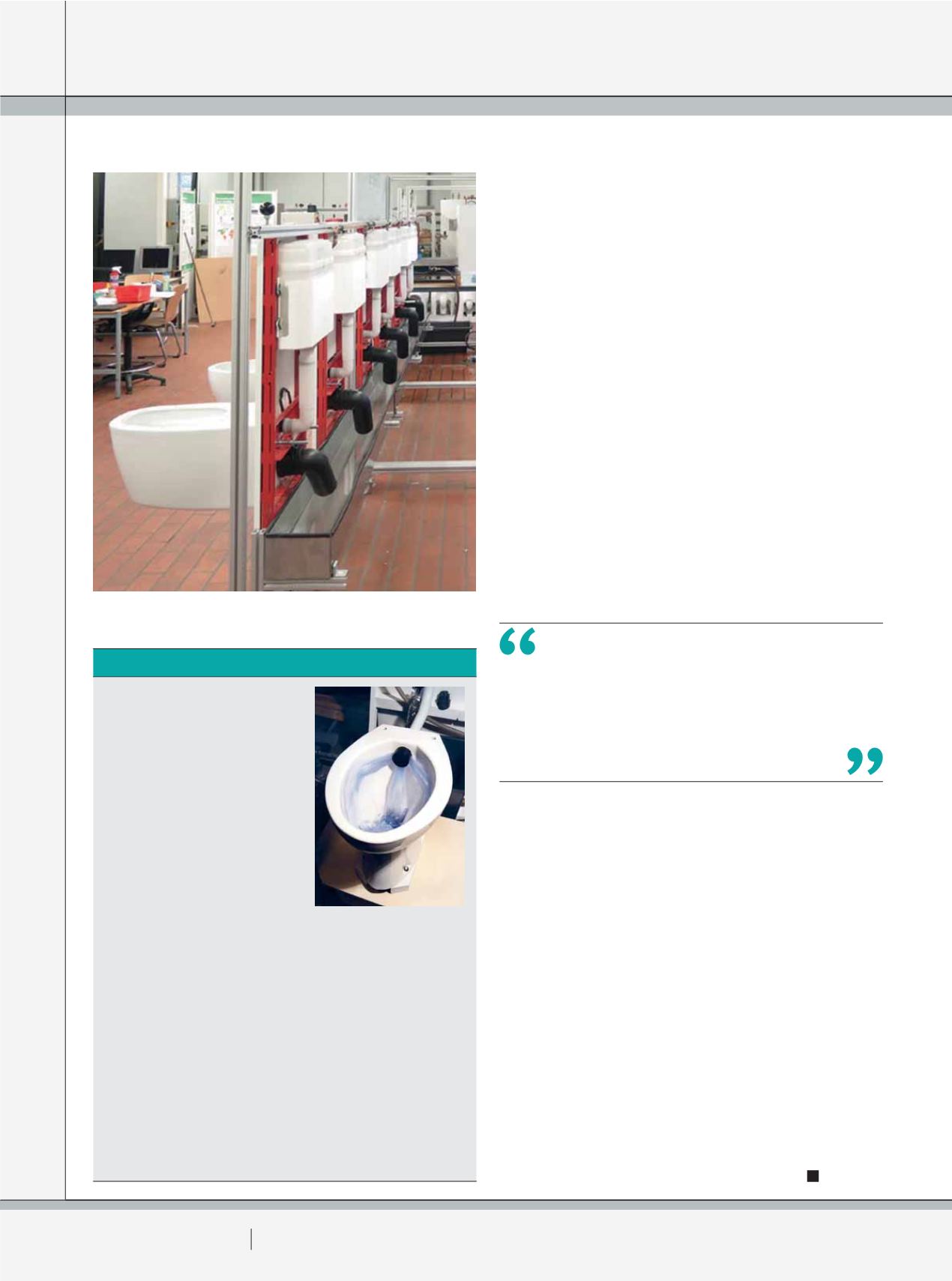

2 2
PLUMBING CONNECTION
AUTUMN 2016
COVER STORY:
PRODUCT DEVELOPMENT
A MAN BEFORE HIS TIME
Every now and then, someone
comes along with brilliant ideas
that the world isn’t ready for, just
yet. Professor John Swaffield
was one such innovator. In 1983,
the UK Confederation of British
Sanitaryware Manufacturers
commissioned a project to design,
develop and site appraise a low
volume flush WC.
Some of the criteria included:
A reduced flush volume
∫
A washdown pedestal P-trap WC
pan flushed by an independent
cistern fitted with a drop valve
∫
The potential to offer a bucket/pour flush WC pan, upgradable to
cistern flush with
the omission of a flushing rim
which could not
be cleaned by pour flushing
∫
The necessity for simplicity of design and operation
With the omission of the flushing rim, Swaffield and his team at
Heriot-Watt University in Edinburgh, Scotland developed a rimless
bowl, a three point cleaning nozzle and a reduced sized exit/trap.
The rimless bowl was easier to clean and it made it easier for it to
be adapted for pour/flush usage (i.e. for use in developing countries
where there might not be a mains supply)
Ninety five of the WC’s were installed in a housing estate in
Gaberone in Botswana where buckets would be used and water
consumption was drastically reduced.
For one reason or another, the rimless technology was never
properly commercialised. How times have changed some three
decades on…
around the rim and into the sump to achieve maximum
cleansing. It was critical to create enough water flow at the
front of the rim to clear waste out of the trap and achieve
good drain line clearance.
“We knew what we had to achieve and applied that to
our rimless technology before moving into a lot of rapid
prototyping work for performance testing evaluation.
During these phases we found that to improve the flushing
performance we needed to stabilise the flow of water at
the front of the rim while ensuring the bowl was washed
effectively. This is where we came up with the flow balancer
concept.
“A predetermined volume of flushing water meets at
the front of the bowl where its flow is redistributed via a
patented balancer, where it is redirected into the sump to
remove the waste,” Steve says.
One of the tight performance requirements Caroma has
refined is just how close to the top of the pan the water flow
travels around the bowl. Caroma’s models are set to flush
at 60mm from the top of the pan, a height that ensures
successful cleansing of the bowl area, which is what rimless
is all about.
RANGE AND INSTALLATION
Caroma’s roll-out program commences in March and it is
offering this rimless Cleanflush technology in three ranges
initially.
The Caroma Care 800 models will immediately be available
to the market including concealed and wall faced solutions.
The popular Liano and Urbane collections are the first
to offer the rimless option (while still offering traditional
models).
All Caroma Cleanflush models will come with Caroma’s
Uni-Orbital® connector, and one important point for
plumbers to note is that you must use matched pan
and cistern sets to ensure flows are balanced and meet
Standard requirements.
Caroma’s strong focus on innovation and its commitment
to fine-tune design in a practical sense should stand them
well in a market that has grown from strength to strength
in Europe. If Australia’s high uptake of past European trends
are anything to go by, they will take off here too.
WE KNEWWHAT WE HAD TO ACHIEVE
AND APPLIED THAT TO OUR RIMLESS
TECHNOLOGY BEFORE MOVING INTO A
LOT OF RAPID PROTOTYPING WORK FOR
PERFORMANCE TESTING EVALUATION.
Rimless toilets have been making waves in Europe whereby
extensive testing has taken place in recent years.
















